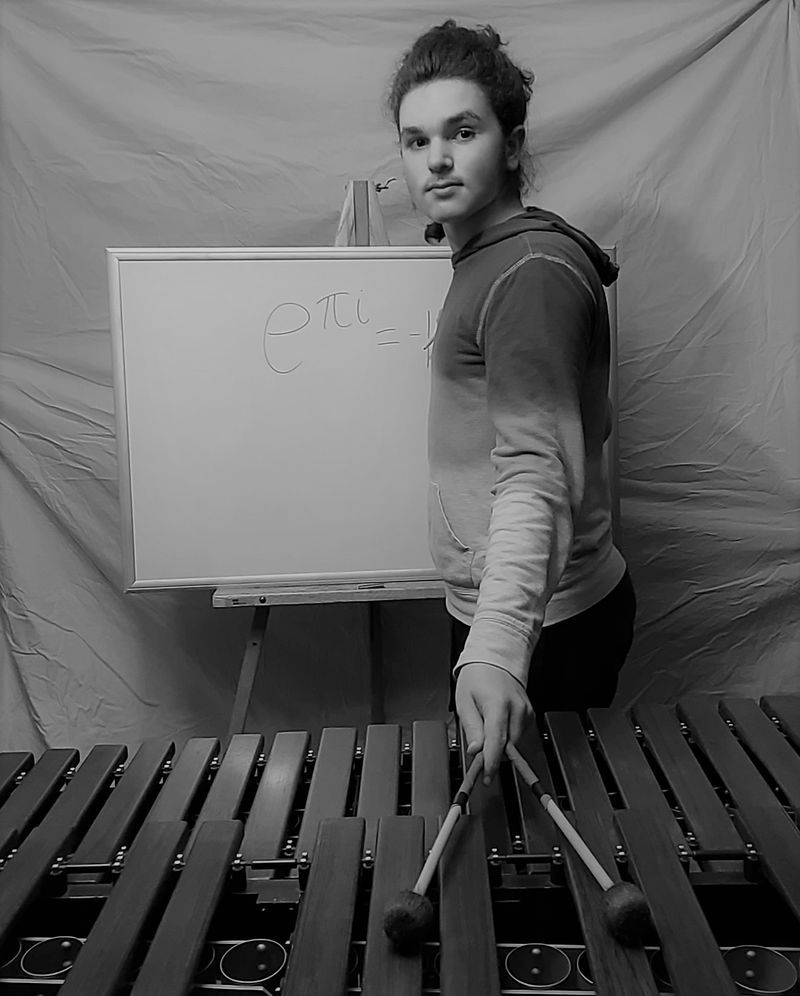We Are America
Mathematical Music and Musical Math
By Eli

Solomon Schechter Day School, Connecticut
“Mathematics, rightly viewed, possesses not only truth, but supreme beauty”(Bertrand Russell). Almost all of my life, I have been infatuated with math and music. Though I didn’t always see a connection between the two, now it is that connection that allows me to continue to love both subjects concurrently—to see the beauty in both.
At first, I only enjoyed math because it was the subject at which I was best. I enjoyed math only because I could brag about how I was doing division while everyone else was on subtraction.
But now, even when I realize how irrelevant that distinction is, I am not deterred in my mathematical pursuits—I am continuing with math because I actually enjoy it. In elementary mathematics, you are usually given concepts without a concrete reason as to why they should be true, and almost everything relates to random computation. But where I am now—in the more abstract, “advanced” area of math—computation is not as important, and everything is given a reason—proof and beauty are the main focus.
Similarly, at first I only enjoyed music because I thought being a percussionist (a “drummer”) was “cool”. Just like in math, I didn’t care much about what I was learning; only that I could tell people that I was learning it.
As such, the joy that I got from playing—and especially practicing—was minimal. Nowadays, however, I enjoy playing and practicing. The practicing gives me further insight into the beauty of the playing—it allows me to further understand the music.
In math, the proof can be just as elegant as the statement. The true reason behind something—even if complicated or obscure—always enhances the understanding of the result. Just like proofs and statements in math, the practice in music provides the reason behind the playing—and especially when simple practicing yields a result that seems complicated, or when complicated practicing yields a result that seems easy, it is the practice that adds to the player’s feeling of beauty when playing.
And just like in music, the elegance of mathematical proof comes from tension and release—from mystery, from unexpectedness, from the tension of seeming digression, and finally from the desire to get to the end result. This leads to a tumultuous yet wondrous journey, one in which you recognize the beauty of the statement itself, as well as the beauty behind the true reason behind it—after all, what is the point of a piece of music if you only hear the end? And what is the point if you only hear the beginning? Without proof, a statement in math can still be beautiful, if just for its intrigue; but the elegant proof, just as intriguing, provides understanding and heightens the sense of mathematical amazement.
Though my interests in mathematics and music diverge academically, neither takes away from the other—they only serve to add to each other in fascination, if not too in understanding. “There is geometry in the humming of the strings, there is music in the spacing of the spheres” (Pythagoras). While I would almost certainly be fulfilled only pursuing one of these—since both have so much to offer—it is pursuing both concurrently that further lets beauty show its face in each. Even if, at first, I enjoyed math and music not for their elegance but for their “coolness” and bragging potential, throughout my life, I have been able to use math and music to recognize the true reasons for which, and the true methods by which, I should enjoy them. Like compounding interest, my growth in both subjects has only led to more growth and more understanding. And this understanding has only led to more and more beauty.
© Eli. All rights reserved. If you are interested in quoting this story, contact the national team and we can put you in touch with the author’s teacher.